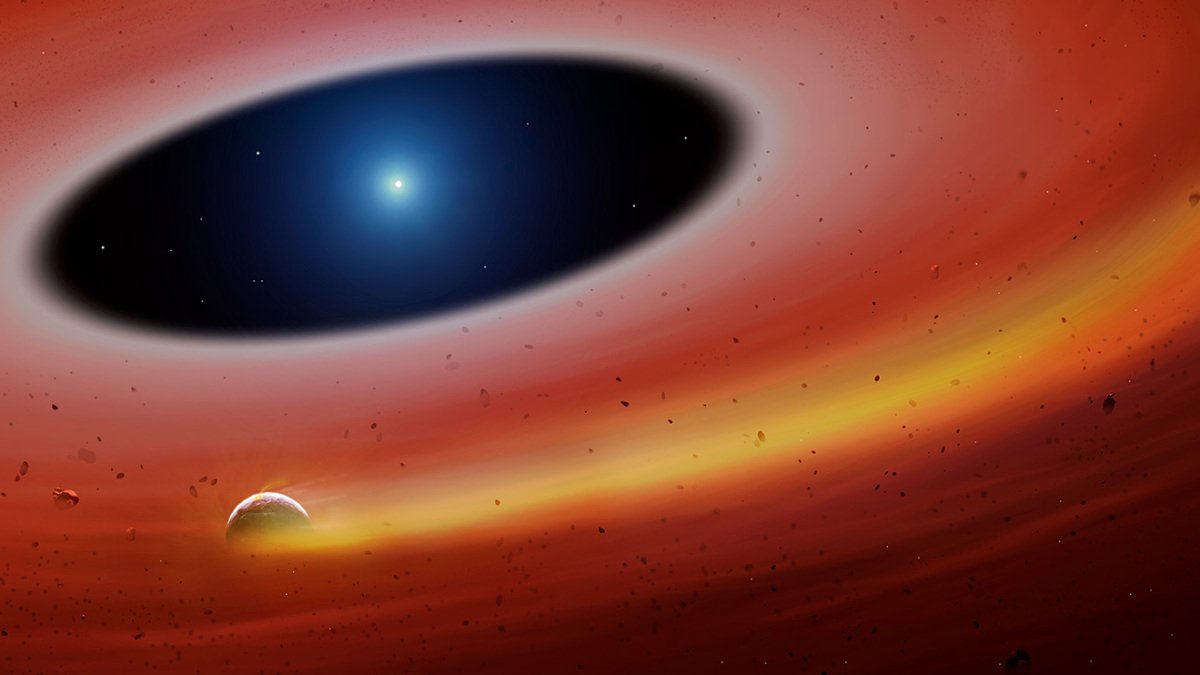Why in the News?
- Scientists have discovered an extremely rare quadruple star system in the Milky Way, named UPM J1040−3551 AabBab.
- The system consists of two cold brown dwarfs orbiting two young red dwarf stars, a configuration that has never been observed before.
- The discovery provides a new opportunity to study brown dwarfs, which are difficult to detect and understand, and to gain insights into star and planet formation.
Key Highlights
- Structure of the Quadruple Star System
- The system consists of four celestial bodies: two young red dwarf stars and two cold brown dwarfs.
- The brown dwarfs orbit the pair of red dwarfs, forming a hierarchical quadruple system.
- This is the first known quadruple system with this configuration in the Milky Way.
- Details about Brown Dwarfs
- Brown dwarfs are often referred to as “failed stars” because they lack sufficient mass to sustain hydrogen fusion like normal stars.
- They form from collapsing gas and dust clouds, similar to stars, and can be up to 70 times more massive than Jupiter.
- Their atmospheres can resemble gas giant planets, containing molecules like H2O and cloud formations.
- Difficulty in Detecting Brown Dwarfs
- Brown dwarfs are cold and faint, emitting very little visible light.
- They are often detected when they orbit brighter companion stars, which allows astronomers to infer their properties.
- Studying such systems helps determine the age, temperature, and composition of the brown dwarfs indirectly.
- Significance of the Discovery
- Unlike most low-mass stars and brown dwarfs, which are usually single, this system shows that a brown dwarf can have a companion, which occurs in less than 5% of cases.
- The brighter red dwarfs provide a reference point to measure and study the faint brown dwarfs more accurately.
- The discovery adds to our understanding of multiple-star systems, which differ significantly from single stars like the Sun.
- Research and Collaboration
- The study was led by Professor Zenghua Zhang from Nanjing University.
- Collaborating institutions included the University of Hertfordshire (UK), Brazilian National Astrophysics Laboratory, SOAR Telescope (Chile), and Center for Astrobiology (Spain).
- The research was published in the Monthly Notices of the Royal Astronomical Society in September 2025.
Difference between Brown Dwarf and Red Dwarf
Brown dwarfs are often called “failed stars” because they never ignite sustained hydrogen fusion, whereas red dwarfs are fully functioning low-mass stars. |
Implications
- Advancing Knowledge of Brown Dwarfs
- Enables better detection and characterization of faint brown dwarfs.
- Helps astronomers estimate age, composition, and temperature
- Understanding Star Formation
- Shows rare configurations in star systems, challenging existing models.
- Provides clues about how low-mass stars and substellar objects form in multiple systems.
- Insights into Planet Formation
- Brown dwarfs act as a bridge between stars and giant planets, offering insights into planetary atmospheres and evolution.
- Studying their formation environment can reveal conditions necessary for planet formation.
- Contribution to Dark Matter Studies
- Brown dwarfs represent undetectable mass in the universe.
- Their abundance and distribution help refine estimates of mass distribution in the Milky Way.
- Enhancing Astronomical Techniques
- Demonstrates the importance of multi-institution collaboration and advanced telescopes like SOAR.
- Sets a benchmark for studying faint substellar objects in multiple-star systems.
Challenges and Way Forward
| Challenges | Way Forward / Solutions |
| Brown dwarfs are faint and emit very little visible light | Observe them in systems with brighter companion stars for indirect measurements |
| Difficulty in estimating properties like age, temperature, and composition | Use hierarchical systems to compare with brighter companions’ properties |
| Rare occurrence of quadruple systems with brown dwarfs | Conduct large-scale surveys to identify more such systems |
| Limited understanding of low-mass star formation in multiple systems | Improve theoretical models using observational data from rare systems |
| Technological limitations in detecting distant, faint objects | Develop more sensitive telescopes and infrared detectors to study cold celestial bodies |
Conclusion
The discovery of the UPM J1040−3551 AabBab quadruple system is a milestone in astronomy as it provides a rare opportunity to study brown dwarfs and low-mass stars in a single system. It enhances our understanding of star and planet formation, while also helping refine the distribution of mass in the universe. With further observations and improved technology, such discoveries could significantly expand knowledge of rare celestial configurations and the mysteries of the Milky Way.
| Ensure IAS Mains Question
Q. Discuss the significance of the discovery of the quadruple star system UPM J1040−3551 AabBab in the Milky Way. Explain how studying such systems can improve our understanding of brown dwarfs, star formation, and the distribution of mass in the universe. (250 words) |
| Ensure IAS Prelims Question
Q. Which of the following best describes the recently discovered UPM J1040−3551 AabBab system? a) A single massive star with two orbiting planets b) A pair of brown dwarfs orbiting a pair of red dwarf stars c) A binary system of two Sun-like stars d) A triple star system with one brown dwarf Answer: b) A pair of brown dwarfs orbiting a pair of red dwarf stars Explanation: The recently discovered system UPM J1040−3551 AabBab is a quadruple star system in the Milky Way, consisting of two young red dwarf stars and two cold brown dwarfs. The brown dwarfs orbit the pair of red dwarfs, forming a hierarchical configuration that has never been observed before. |




